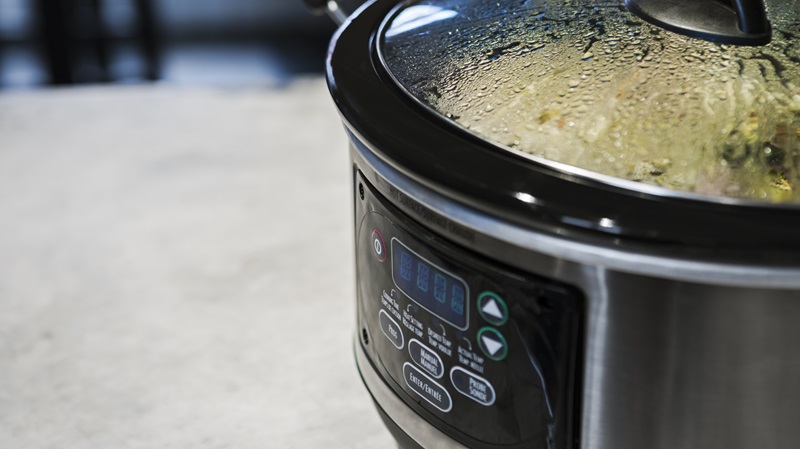Keeping your slow cooker clean is essential for maintaining its performance and ensuring the longevity of the appliance. A clean slow cooker not only enhances the flavors of your meals, but also prevents bacteria buildup, eliminates lingering odors, and prevents any cross-contamination when cooking different dishes. Neglecting to clean it can lead to stubborn stains and a greasy film, making it more difficult to clean in the long run. By taking the time to properly clean your slow cooker after each use, you can ensure that it remains in top condition and ready for your next delicious meal.
Benefits of Regular Maintenance
Regular maintenance of your slow cooker goes beyond just cleaning. It involves checking the electrical components, handles, and knobs for any signs of wear or damage. By inspecting and maintaining these parts, you can prevent any potential safety hazards and ensure that your slow cooker operates efficiently. Remember to follow the manufacturer’s instructions for usage and care.
Basic Cleaning Techniques for Your Slow Cooker
Preparing it for Cleaning
Start by unplugging the slow cooker and allowing it to cool down completely. This will prevent any accidental burns or injuries while handling the appliance. Once cooled, carefully remove the lid and any remaining food from the crock. If there are any stubborn residues left over from burnt or overcooked food, fill the slow cooker with warm soapy water and let it soak for a while to loosen them. After soaking, empty the water and use a soft sponge or cloth to wipe away any remaining food particles. Finally, rinse the crock thoroughly with warm water to remove any soap residue before proceeding with the cleaning process.
Cleaning the Removable Parts
The removable parts of a slow cooker, such as the lid and crock, are typically dishwasher-safe, making the cleaning process a breeze. Start by carefully placing these parts in the dishwasher. If they do not fit or if you prefer to hand wash them, use warm soapy water and a soft sponge or cloth to clean them thoroughly.
Pay special attention to any stubborn stains or residue, using a gentle scrubbing motion if needed. Rinse the parts with warm water to remove any soap residue. For tough stains or odors, you can create a paste using baking soda and water and gently scrub the affected areas. Once cleaned, allow the parts to air dry or use a clean towel to dry them completely before reassembling.
Cleaning the Exterior
Use a damp cloth or sponge to wipe away any spills or splatters on the outside of the slow cooker. For any sticky residue, use a mild kitchen cleaner or a mixture of vinegar and water. Avoid using abrasive cleaners or scrub brushes, as they can scratch the surface. Once clean, dry the exterior thoroughly with a clean cloth.
Slow Cooker Preventive Maintenance Tips
Using Slow Cooker Liners
These disposable liners fit inside the slow cooker pot and prevent food from sticking to the sides, making it easier to clean up afterward. Simply place the liner in the pot before adding your ingredients, and once you’re finished cooking, carefully lift out the liner and discard it along with any food residue.
Slow cooker liners are particularly useful when cooking dishes that tend to stick, such as cheese-based recipes or sticky desserts. They also help to preserve your appliance’s quality by preventing staining and buildup. Always follow the manufacturer’s instructions for usage and disposal.
Proper Storage and Care
Once cleaned, dry all parts thoroughly before reassembling and storing. Store the slow cooker in a cool, dry place away from direct sunlight. If possible, keep the original packaging to protect it from dust and scratches. Regularly inspect the power cord for any signs of damage and replace it if necessary.
Troubleshooting Common Issues
Handling Cracked or Damaged Components
Over time, your slow cooker’s components may become cracked or damaged, but this doesn’t necessarily mean you need to replace the entire unit. If the ceramic insert has a crack, it’s best to discontinue its use to prevent any food safety issues. However, you can still utilize the slow cooker by purchasing a replacement insert from the manufacturer or a compatible one from a third-party seller.
Similarly, if the lid becomes damaged or doesn’t fit properly anymore, check if you can find a replacement lid. Many manufacturers offer replacement parts, ensuring that you can continue to use your beloved slow cooker without having to purchase an entirely new one. Remember to check the manufacturer’s website or contact their customer service to inquire about available replacement parts for your specific model.

Enhancing Longevity and Performance
Upgrading Accessories and Parts
Investing in high-quality accessories such as a tempered glass lid or a programmable timer can make a significant difference in the overall functionality of your slow cooker. These upgrades can provide better heat retention and allow you to monitor your dishes without lifting the lid, ensuring a more consistent cooking process.
Consider replacing worn-out parts like the inner ceramic pot or the seal on the lid. A cracked or damaged pot can affect the cooking performance, while a faulty seal may lead to heat loss and longer cooking times. By regularly inspecting and replacing these components, you can ensure that your slow cooker operates efficiently and delivers delicious meals every time.
Tips for Optimal Slow Cooker Performance
Always ensure that your ingredients are properly prepared before adding them to the slow cooker. Cutting meat into smaller chunks or pre-cooking certain ingredients can help achieve more consistent results.
Furthermore, it is essential to utilize the correct cooking settings and times for different recipes. Most slow cookers have various heat settings, such as low, high, or even a programmable option. Adjusting these settings according to your recipe’s requirements can prevent undercooking or overcooking your meals.
Lastly, allow enough cooking time for your dishes to fully develop their flavors. Slow cookers are designed to cook meals slowly over an extended period, allowing the ingredients to meld together and create rich, flavorful dishes. Rushing the cooking process may result in less tender meat or underdeveloped flavors.
By following these tips and upgrading its accessories and parts as needed, you can ensure optimal performance and enjoy delicious, hassle-free meals cooked in your trusty slow cooker.



